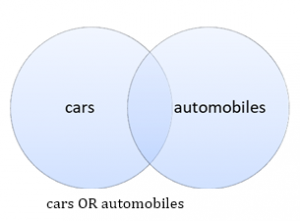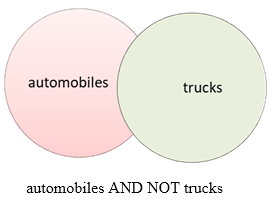Build a Search Strategy
Once you decide what information you need, the next step is to figure out where and how to find it. As we have discussed, there are many sources, but locating information can be a random, hit or miss effort, that relies on luck and serendipity for success. While many successful research projects have developed as a result of serendipitous efforts, a more strategic approach usually is less frustrating.
When looking at print sources, such as books and magazines, the table of contents lists the chapters and section headings, and is a great tool to help determine the organization of information. In addition, looking up terms and concepts in the index is often useful to find specific material included. Many sources of information include references and recommended reading lists for additional material on a topic, and these can help someone that wants to pursue an idea with more depth. Print sources may have other tools to help readers locate specific information within the bound material.
Online sources became the standard format for information when computers became commonplace, and the Internet exploded in the 1990’s. Websites and other online sources have similar tools to help locate and access information. Sometimes the online sources are indexed, but the terms locate the information can be in two types: controlled and uncontrolled search terms. Controlled language means that only a specific list of terms is used to describe something. For example, information about automobiles may be indexed using the general term “automobiles” or can be divided into various types, such as cars, trucks, tractors, vans, but using “controlled language,” the indexer would have to decide which terms to use, and exclude the use of others. The controlled language indexing terms are usually called subject headings or descriptors, depending on the resource. Uncontrolled language is used to locate material when the index does not include subject headings or descriptors, the terms are simply found in the source.
To search online sources, there are three major search languages: keyword, subject headings and natural language. Keyword searching is the most common, and requires the researcher to consider each term entered as a major component of the topic. Subject headings are the terms used in controlled system, where the indexing has specific rules and standards that apply for using the subject headings. Academic libraries that use the Library of Congress Subject Headings. In the previous example of automobiles, indexers using subject headings may use “automobiles” but not “cars” or “motorcars” for terms to describe information in books, articles or websites. Small public and school libraries often use the Sears List of Subject Headings, which generally uses more general terms in comparison to the Library of Congress Subject Headings. Both subject heading lists always have the main term at the beginning, and have subdivisions for different aspects of the topic, such as “safety” in the example below. It is also important for the researcher to enter the correct form of the subject headings, with the correct subheading. Natural language is used in many search engines to locate material, by phrasing the query in a standard question format. Consider the topic of the history of automobile design in the search phrases in the examples below.
| Search Language | |
| Keyword | (automobiles OR cars) AND history |
| Subject Headings | Automobiles—Safety |
| Natural Language | What are the major developments in the history of automobile design? |
When doing a keyword search, it is also important to  link the keywords with Boolean operators for efficient use of the search engine. Boolean operators were developed for use in algebra by George Boole and published in The Mathematical Analysis of Logic which was published in 1847, and later developed as a segment of algebra called “Boolean algebra” and “set theory.”
link the keywords with Boolean operators for efficient use of the search engine. Boolean operators were developed for use in algebra by George Boole and published in The Mathematical Analysis of Logic which was published in 1847, and later developed as a segment of algebra called “Boolean algebra” and “set theory.”
In the example to the left, the researcher has determined automobiles and history as the keywords to search. However, for the computer to understand how to combine the search terms and require both terms in the results, the Boolean operator “AND” needs to be between each of the keywords:
When researchers find that a term has  many synonyms or terms used in a similar context, such as automobiles and cars, and either term may be found in the results, the Boolean operator “” needs to be between each of the keywords: Boolean operator “OR” needs to be between each of the keywords:
many synonyms or terms used in a similar context, such as automobiles and cars, and either term may be found in the results, the Boolean operator “” needs to be between each of the keywords: Boolean operator “OR” needs to be between each of the keywords:
 When something should be excluded from the search results, use the Boolean operator “NOT” between the keywords. However, use “AND NOT” with a great deal of caution, you may exclude many results that would be useful.
When something should be excluded from the search results, use the Boolean operator “NOT” between the keywords. However, use “AND NOT” with a great deal of caution, you may exclude many results that would be useful.
The keywords can be combined in any order, however make sure the Boolean operator applies to the terms you intend. To alleviate confusion, put each section of the search statement in parentheses (). Similar to a complex algebraic equation, parentheses denote how the search should be processed with the search engine, and the grouping is important. For example
cars OR automobiles and NOT trucks AND history
could be interpreted by the search engine as
(cars OR automobiles) AND (NOT trucks) AND history
or
cars OR (automobiles AND NOT trucks) AND history
or
(cars OR automobiles) AND NOT (trucks AND history)
Quite possibly, the most efficient search statement for this topic is
(cars OR automobiles) and history
because eliminating the term “trucks” from the search results may exclude many useful sources. Researchers need to know about the search capabilities, while maintaining control of the search results.
The first step of developing a search strategy is to select a topic. Many times an instructor will assign a topic, but most instructors anticipate that each student will approach the topic from a different perspective. Other instructors assign a research project to developing writing skills for a specific purpose, and the topic is chosen by the student. Meanwhile, many people enjoy exploring new ideas and information independent of a research assignment. Regardless of the reason for the research, the choice of topic is important.
After the selecting the focal point of your research, develop a question that you will probe in your research. For most disciplines, use the “Build a Keyword,” form on p. 23 and write out your research question. Circle or highlight the keywords and put them on the lines below, with the Boolean operator “AND” between each concept. Below each main keyword, put the synonyms or words used in the same context, linked with the Boolean operator “OR”.
Students in health science programs usually use the “PICO” research format on p. 24, and the research keywords need to be in each of the categories of Population, Intervention, Control and Outcome. Again, put synonyms or similar terms below each PICO element.
After listing the synonyms and keywords, review the terms and determine which are the main keywords to be used in the databases. Make a note of more specific, technical or scientific terminology that may be used in the more advanced databases. In addition, review the terms and note those that could be truncated. Truncation is useful for searching a keyword that has many suffixes. For example, searching “educat* “ in a database will retrieve records with any form of that word: education, educate, educating, educated, educator. Most databases use the asterisk (*) for the truncation symbol, but some use a question mark (?), exclamation mark (!), or other symbol as a wildcard in place of the ending. In most databases, truncation works best when using at least four (4) letters, although more letters will help retrieve more relevant results.
The most important guideline when developing a search statement is to be flexible. Using the original search statement developed with this exercise will be efficient in the general databases, but as your research progresses to more advanced sources, the search statement will need to be revised with more advanced terminology. In addition, as the research progresses, it may be important to adjust your topic and search statement.
